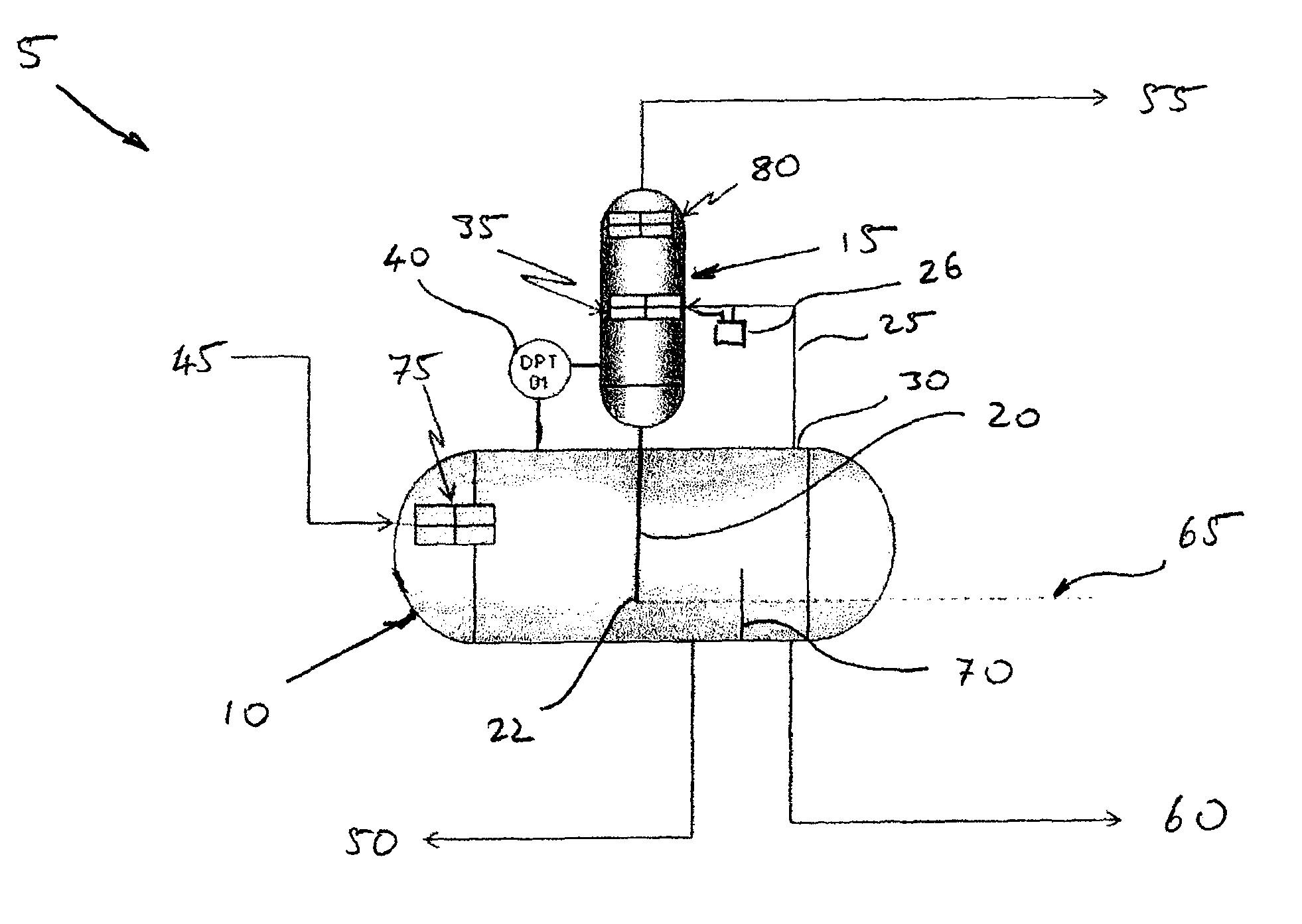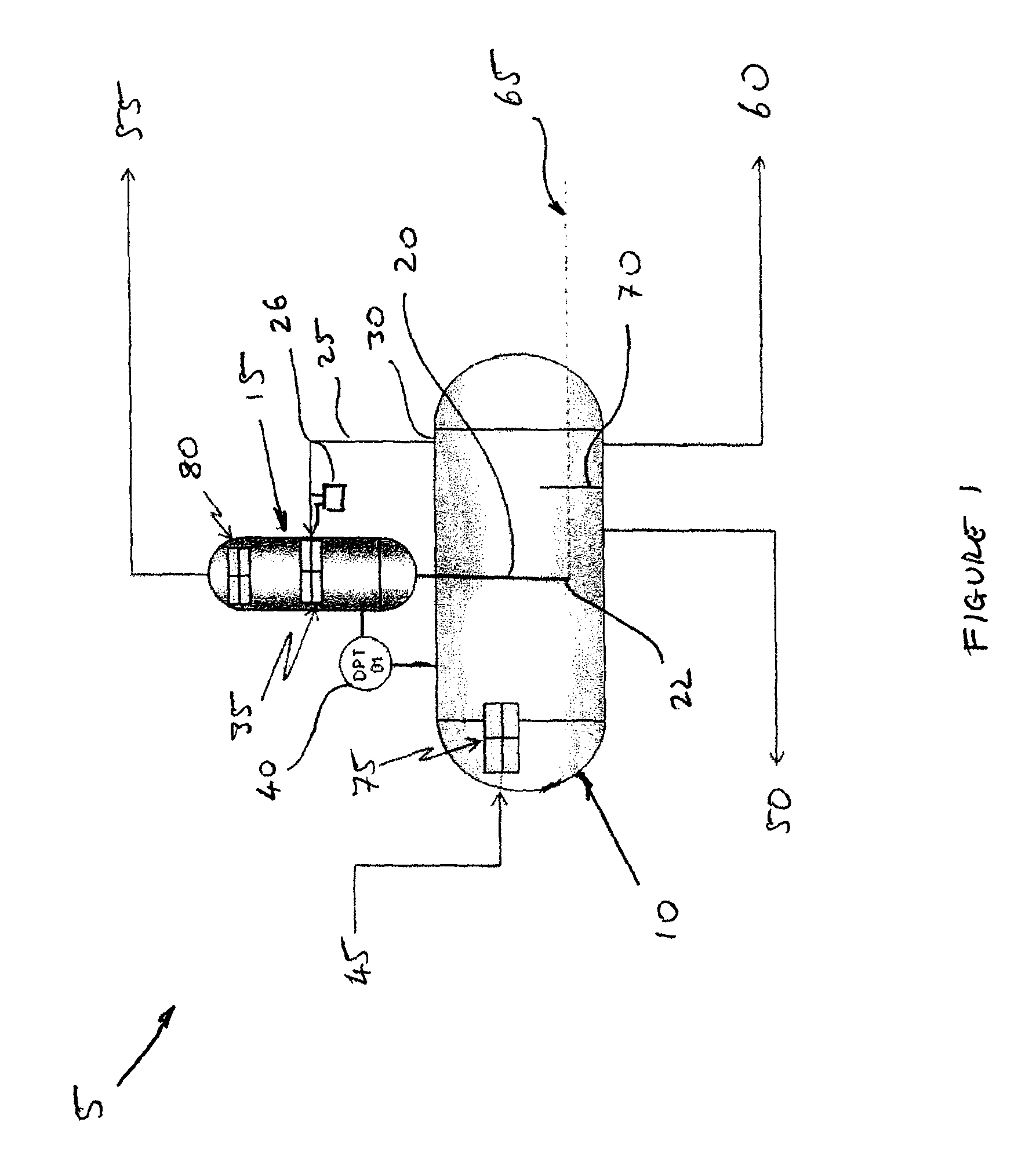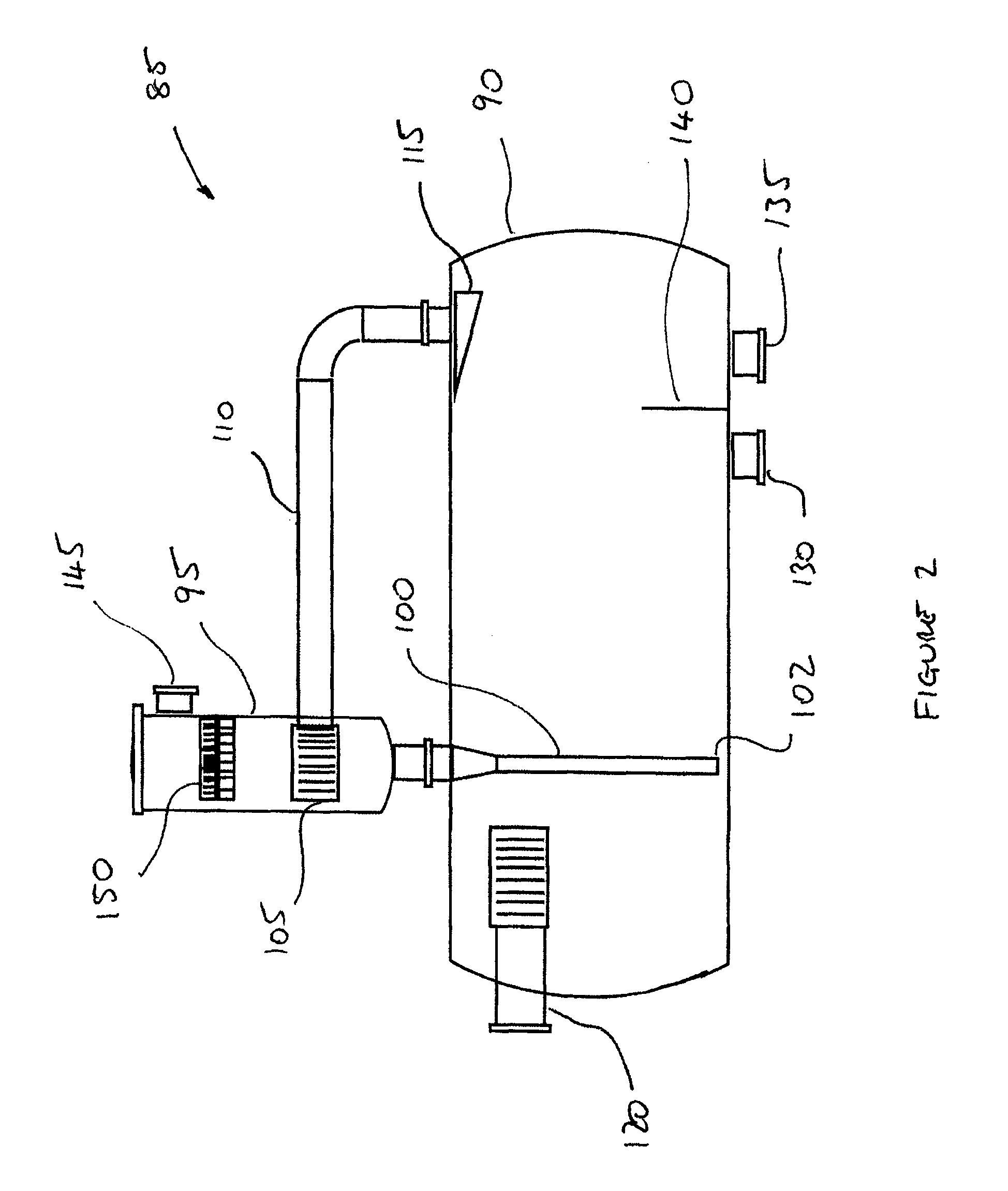However,
field experience indicates that many of these systems experience significant liquid carry-over which has resulted in problems and damage of downstream facilities like the gas compressions.
For facilities where the inlet fluid is from a pipeline,
slug flow in the pipeline results in significant sloshing, liquid entrainment and a drastic change in liquid level at the inlet separator.
This turbulence at the inlet separator may result in a significant amount of liquid collecting around the gas outlet device at the separator.
This, in turn, will result in both high liquid entrainment into the gas
stream out of the separator and also potential blockage of the separator outlet device particularly if the liquid is waxy.
The blockages occur as a result of cold spots at the gas outlet device; with the effect made worse by the normally small flow path associated with the internals.
“Sloshing” of the
liquid phase may also lead to liquid coming into contact with the gas outlet device.
If the liquid entrained in the gas
stream is waxy, there is no means of removing the
wax that builds up at the device unless the separator is taken offline, and the outlet device disassembled.
This increases the size of the separator.
In particular, waxy crude that forms gel or crystalline structure at lower temperatures normally leads to a number of operational problems especially the ability of the fluid to flow and clogging of the instruments and internals that is integral to the performance of the equipment.
However it is unavoidable that some cold spots will develop within the system.
Low
specific heat means that the gas gains or loses temperature faster.
The problem of
wax is compounded within all such separation, as the
gas phase internals are normally built into the inlet separator and consists of small flow paths and parts, and further, with the
gas phase in direct contact with the
oil phase.
Also, it has been found that slugging, or surges, lead to more liquids carryover in the
gas phase.
For specific FPSO applications, the motion of the vessel may make the above problem worse.
Furthermore, there is no means for
early detection of the
waxing problems, and no means to fix the problem online if the
wax begins to form.
And when wax begins to form, the problem is self propagating.
This however increases the space and weight requirements and in addition increases the control, operational & maintenance complexity of the system.
A further problem involves slugging which is a challenging problem for many
crude oil production receiving facilities particularly those receiving production from multi-phase
subsea pipelines as they are susceptible to slugs.
Slugs generated in the pipelines and risers not only require
processing facilities to be increased in size to accommodate the slugs, but also results in production upsets associated with the high speed at which the slugs arrive and the transient pressure fluctuations due to the surge of gas following the arrival of the
slug.
Under these scenarios the production facilities like inlet heat exchangers, production separators and downstream gas compressors generally will not be able to cope with this transient slugging phenomenon resulting in production upsets and possibly shutdown.
After the
slug arrives at the outlet of the pipeline or production platform, the compressed gas creates a large gas surge, which again may result in major upsets in topside facilities, like the downstream gas compression trains.
Without any effective separation upstream, the slug flow conditions at the heater results in large heating duties of the exchanger as both the gas
stream and the liquid streams are heated.
The excessive heating duties results in poor performance of the
heat exchanger, thus waxy crude and emulsions are still of existence in the outlet stream.
Furthermore, the system experiences large pressure drop as the heating duty is high.
On the other hand, the existence of waxy crude and emulsions will cause blockages at the inlet and outlets of the separator.
Although the separation of oil, gas and water can be performed, the exiting gas stream will comprise significant liquid entrainment that will cause damage to the condensing system, resulting in system shutdown.
Hence, the reliability of the separator system is very low.
In addition, these turbulences and the ineffective heating of the inlet fluids leading to the presence of water
emulsion, inherent with multiphase fluids under slugging conditions will also result improper
oil water separation in the separator.
This will require the downstream system to be upsized due to excessive water carry-over in oil stream and excessive oil carry-over in the water stream.
Furthermore, the presence of sand in the production fluid often results in sand build-up in the downstream separator which in turn possibly requires frequent shutdowns to remove sand from the separator or requires sand removal devices to be installed at the separator which are expensive.
 Login to View More
Login to View More 


